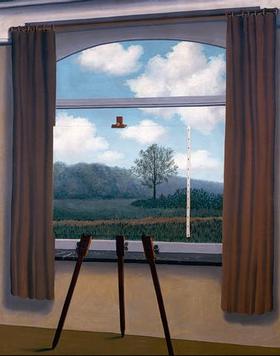The death and destruction that occurred during World War I led many artists to abstract life and define something outside of reality. The international competition that had existed between countries would lead to the clashes in 1914. Such socio-economic changes throughout the early twentieth century changed both the European and the North American worldview. The changes led to the development of new styles of art, where individuals experimented with abstract ideas, outside of the reality they were attributing to warm and unbounded competition. The development of Einstein’s theories, including relativity, psychologically influenced many of the painters—leading to the development of Cubism beyond the initial period from 1905 to 1910.
Simultaneously, changes in technology that led to automation and the expansion of factory-based systems also led to the invention of new materials that the artist could use, along with the creation of new somatic ideas and subject matters. Coupled with Freud and Jung’s dream states, artists started incorporating a series of dream states into their art. The dream analysis of Freud would find its way into artistic theories such as that by Breton. The incorporation of treating shell-shocked troops with the idea of the superego, and the moralising role imported from it, led to the development of surrealism as an alternative to the real. The surreal extended into shock and what some called ‘compulsive beauty’. The extreme included the work by Brunel and Dali (1929), who visualised shock and trauma as concepts that would awaken people to their subconscious.
René Magritte created works during the ‘golden age’ of surrealism. As with the nihilistic protest movement started with Dada, such works abandoned the tradition of academic art and the value imparted through traditional Western education. While Dadaism and surrealism shared many similarities, they stood apart in their methods of opposition to the existing status quo and power structure of society. Artists such as George Grosz moved from a nihilistic protest associated with the Dada movement towards a focused expression of disgust, designed to reject the cruelty and decadence which he had perceived as associations with the capitalist classes and bourgeois.

George Grosz (1893-1959). The Pillars of Society, 1926 (oil on canvas).
In The Pillars of Society, Grosz sought to portray the true faces of the masters of society. In the portrait, we see the capitalist fat cats supported by both religious figures and the military. In a homage to mediaeval art, the capitalist leaders hold symbolic attributes, in the same manner that saints would carry relics, to help identify them. The contrast between Dadaism and surrealism lies in the artist’s focus, with the surrealist artist seeking a more creative and positive philosophy. The nihilistic attitudes of the Dadaist artists such as Grosz disregarded the art of the past—while still incorporating some of the ideas. The paradox is that they are self-destructive. In their condemnation of cultural conformity, they create a new form of conformity.

René Magritte (1898-1967). The Human Condition, 1933.
The surrealist artists, including Magritte, seek to expand monument consciousness. We can see the symbolism in The Human Condition (1933), where the painting exactly matches the scene outside the window. Alternatively, as in The Pillars of Society (1926), the artist looks back at a past that never truly existed, and rejects the existing bourgeois ideas of the Western capitalist society.

Max Ernst. The Eye of Silence, 1943 (oil on canvas).
In extending Freud’s idea of dream interpretation, Max Ernst (1943) created an image of what appears to be a calm, reflective lake. The brown and red shapes concurrently imply ancient stone movements, rock formations, foliage, and ancient civilisations. The artist seeks to form new entries that provoke a symbolic investigation into the human psyche. Such a provocative investigation into the conjoining of organic and inorganic structures creates a fusion of animate and organic structures with rock and gelatinous mineral formations.

Andre Masson (1896-1987). Automatic Drawing, 1924.
Simultaneously, we can see the free association techniques that Freud initiated, creating and crafting a resolution of dream states between the unconscious and the conscious minds in extending reality, in Masson’s Automatic Drawing (1924). The following work of Salvador Dali, including his Slave Market with the Disappearing Bust of Voltaire (1940), demonstrated the concept of incorporating the most profound memories and instincts of the unconscious human mind into art. In adopting such ideas, both Freud and Jung integrated the unconscious mind into the artistic process.

Salvador Dali (1904-1989). Slave Market with the Disappearing Bust of Voltaire, 1940.
As the surrealist artist sought to realign society, the Dadaist rejected society as something absurd. In Ernst’s The Elephant Celebes (1921), we see the reinvention of time and society. In this work, Ernst takes a Sudanese corn bin and transforms it into an abstractly menacing behemoth or leviathan, one that creates Hobbesian concepts of both government and childish rhymes. The Freudian free association includes a headless figure of a female, inextricably combined to form a furtive, dreamlike state.

Max Ernst (1891-1976). The Elephant Celebes, 1921 (oil on canvas).
Here, the artists demonstrate the philosophical rejection of noting the absurdities in life.
References
Andre Masson (1896-1987). Automatic Drawing, 1924.
George Grosz (1893-1959). The Pillars of Society, 1926 (oil on canvas).
Luis Bunuel & Salvador Dali. Un Chien Andalou, 1929 (film).
Max Ernst (1891-1976). The Elephant Celebes, 1921 (oil on canvas).
Max Ernst. The Eye of Silence, 1943 (oil on canvas).
René Magritte (1898-1967). The Human Condition, 1933.
Salvador Dali (1904-1989). Slave Market with the Disappearing Bust of Voltaire, 1940.

